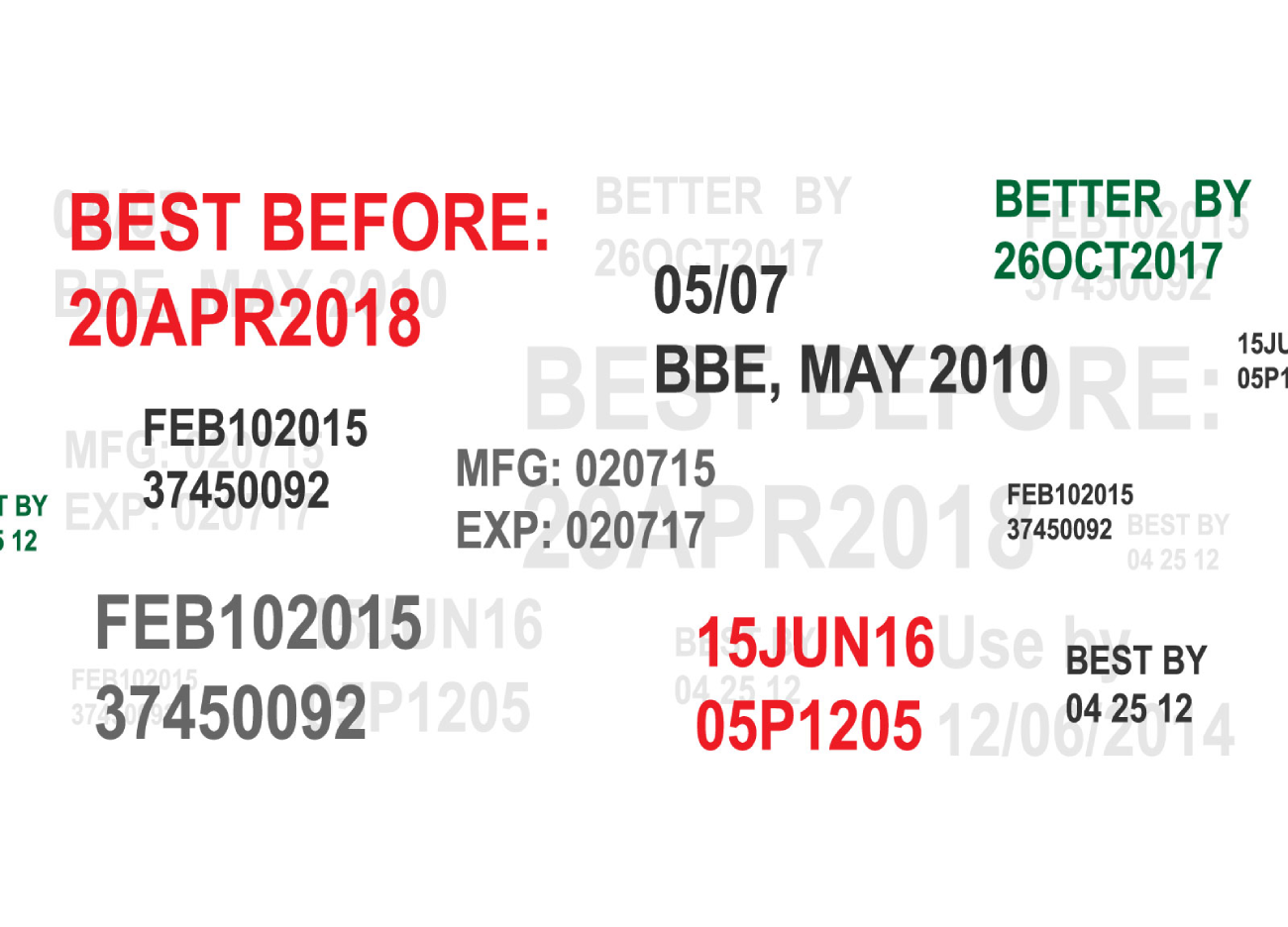
Date labels: what do they mean?
Date labels are one of the key information that a package conveys to the consumers. Considering the fact that food waste is a major environmental concern, standardized date labeling must be in place to minimize confusion for consumers and ultimately prevent food waste. According to ReFed studies on food waste in the US, 20% of food waste at consumer level is due to uncertainty over the date labels of the packaged food. It is important to understand what all these labels mean and educate consumers to make the right choices.
There are different introductory terms used in date labels such as ‘use by’, ‘sell by’, ‘best if used by’, ‘best before’ and ‘expiration date’. The table below summarizes the main wording used in date labels in the US, the UK, and Canada.
Table 1 Different date labeling phrases and descriptions [3] [4] [5]
| Wording | Description |
| Best before (best if used by) | Related to quality of the product. It indicates the date until when the taste, smell, and quality of product is maintained at best level. |
| Use by | Related to food safety. It indicates the date until then product is safe to be consumed (risk of food poisoning after that date). |
| Sell by (display until) | Related to sales. It indicates until when the product can be shown on the shelves of stores or be sold (used for inventory control). |
| Expiration (expiry) date | Related to food safety. It indicates the date until when product is safe to be consumed (risk of food poisoning after that date). |
Expiration date or ‘Use by’ in the US, should only be only used for certain food products that have special composition and nutrition such as meat replacements, infant formula, and food supplements. These products must be kept according to storage instructions (i.e. temperature, moisture, etc.) and must not be used after expiration dates on the package. For other food products, date labels are generally voluntary quality-based labels. The ‘Best if used by’ or ‘best before’ label is recommended to ensure less confusion over date labels on packaged foods. This wording conveys the message that the product will be at its best quality when consumed by that calendar date and if the food that does not have spoilage signs (like taste, odor, mold, etc.), it can be consumed beyond that date.
Bread bags and other bakery products carry ‘best before’ labels meaning that it can be used beyond that calendar date as long as there are no signs of spoilage. So, next time you want to throw out your bread because of the date on the label, please make sure it is actually spoiled by visual inspection or checking texture, taste, and odor. We can all play a part in minimizing food waste and combating climate change.
References:
[1] ReFed, “Standardized Date Labeling” Retrieved from https://www.refed.com/solutions/standardized-date-labeling.
[2] The US Food and Drug Administration (FDA), “Confused by Date Labels on Packaged Foods?,” 2019 Retrieved from https://www.fda.gov/consumers/consumer-updates/confused-date-labels-packaged-foods.
[3] The U.S. Department of Agriculture (USDA), “Food Product Dating,” 2019 Retrieved from https://www.fsis.usda.gov/food-safety/safe-food-handling-and-preparation/food-safety-basics/food-product-dating.
[4] Canadian Institute of Food Safety, “The Difference Between Best Before and Expiry Dates” Retrieved from https://www.foodsafety.ca/blog/difference-between-best-and-expiry-dates.
[5] The UK Food Standard Agency, “Best before and use-by dates” Retrieved from https://www.food.gov.uk/safety-hygiene/best-before-and-use-by-dates.
[6] Governments of Canada, “Best-before and expiration dates of foods: what you should know,” 2020 Retrieved from https://healthycanadians.gc.ca/recall-alert-rappel-avis/hc-sc/2020/73383a-eng.php.
[7] WRAP, “Best Before dates shouldn’t be a barrier to redistribution,” 2020 Retrieved from: https://wrap.org.uk/media-centre/press-releases/best-dates-shouldnt-be-barrier-redistribution.

